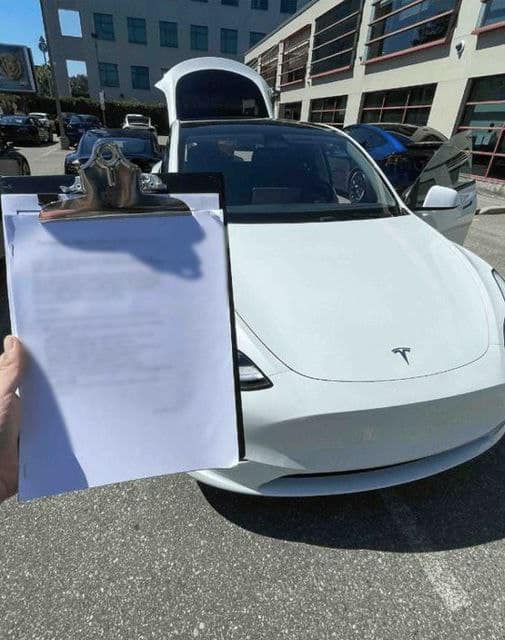A Tesla owner recently revealed his surprising annual electricity bill, and it’s not what you’d expect. With Tesla’s reputation for being a high-priced brand, many assume that maintaining an electric vehicle (EV) would also come with a hefty cost. However, the reality turned out to be quite different, as this owner’s experience demonstrated.

Unexpectedly Low Electric Bill
The Tesla owner, who shared his story on X (formerly Twitter), left people stunned with the total amount of his electricity bill after driving his Tesla for an entire year. The total? Just $2.37 (£1.89). This shockingly low figure defies expectations, especially when compared to the hundreds of dollars typically associated with charging electric vehicles.
How Did the Bill Come Out So Low?
The key to this low cost lies in the use of a Tesla Powerwall, a home battery system designed to store energy. Here’s how it works: the Powerwall integrates with a home’s existing electrical setup, often paired with solar panels. During sunny days, the solar panels generate excess energy, which is stored in the Powerwall. This stored energy is then used to charge the Tesla, reducing reliance on the grid and lowering the electricity bill significantly.
While the Powerwall itself isn’t cheap, its benefits become clear over time. The cost of a Tesla Powerwall starts at around $11,500 (£9,000) and can go up to $15,000 (£11,800), depending on installation and capacity. Despite the high upfront investment, this setup can make charging a Tesla much more economical in the long run, as demonstrated by the Tesla owner’s experience.
A Long-Term Perspective
Though the initial cost of purchasing a Powerwall and installing solar panels can be steep, many see it as a smart long-term investment. For Tesla owners planning to keep their vehicle for several years, the system’s ability to reduce electricity costs over time makes it appealing. By relying more on solar energy, users can avoid fluctuating electricity rates and decrease their overall environmental impact.
In this case, the owner’s $2.37 electricity bill serves as a testament to the long-term financial benefits of a solar-powered home battery system. It not only showcases the potential savings for Tesla owners but also highlights how innovative technology can reduce costs and increase energy efficiency.
Community Reactions
The Tesla owner’s post quickly garnered attention, sparking a mix of reactions from the online community. Many users were both impressed and amused by the extremely low cost. One user joked that the owner should set up a GoFundMe to help cover the $2.37 bill, while another expressed mock sympathy for the “huge” expense. Others were more focused on the cost of the Powerwall itself, pointing out that while it saved money over time, the initial investment still required a significant financial commitment.
Some users also shared their own experiences with solar panels and Powerwalls, reinforcing the idea that the combination can lead to substantial savings on electricity bills. Many were inspired by the post, with a few even considering switching to a solar-powered setup to reduce their own energy costs.
Tesla’s Impact and Future
Tesla has long positioned itself as a pioneer in sustainable technology, and stories like this one only add to the brand’s reputation. As the company continues to roll out innovative products, including the highly anticipated Cybertruck, it remains clear that Tesla is committed to reshaping the auto industry. With advancements in energy efficiency, battery technology, and EV range, Tesla is making it easier for customers to embrace a more eco-friendly lifestyle.
While the upfront costs of owning a Tesla and installing a Powerwall might be daunting for some, the long-term benefits of reduced energy costs and a smaller carbon footprint are undeniable. As more Tesla owners adopt similar setups, we may see more stories of astonishingly low electricity bills.
Final Thoughts
This Tesla owner’s experience is a fascinating example of how integrating solar energy with home battery storage can dramatically cut costs. The story also illustrates how Tesla owners are finding ways to maximize their investment over time. For those considering making the switch to an electric vehicle or installing solar panels, this story serves as both an inspiration and a practical look at the potential financial benefits.
Tesla’s commitment to sustainable energy solutions continues to make headlines, and stories like this one only reinforce its mission to make the world greener, one electric car at a time. So, while owning a Tesla might seem expensive at first glance, this $2.37 electricity bill is proof that running one doesn’t have to break the bank.





